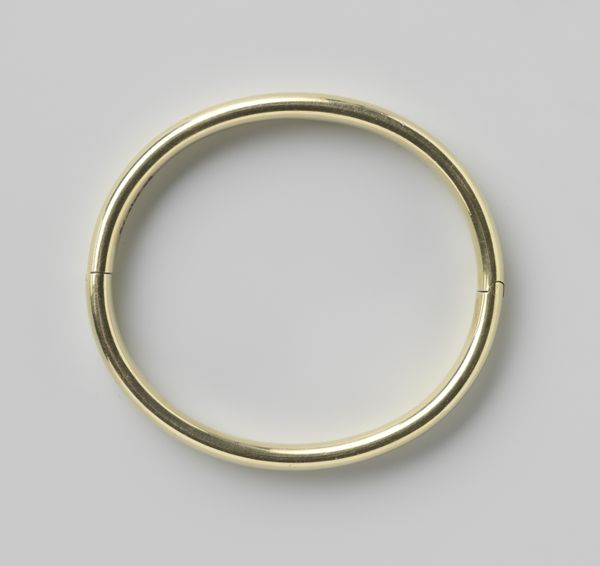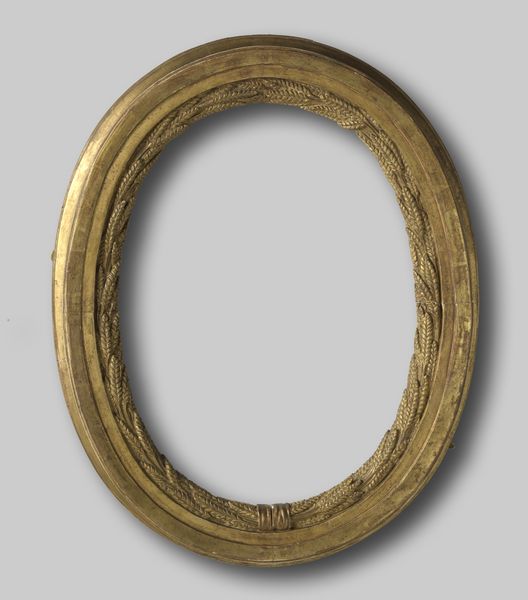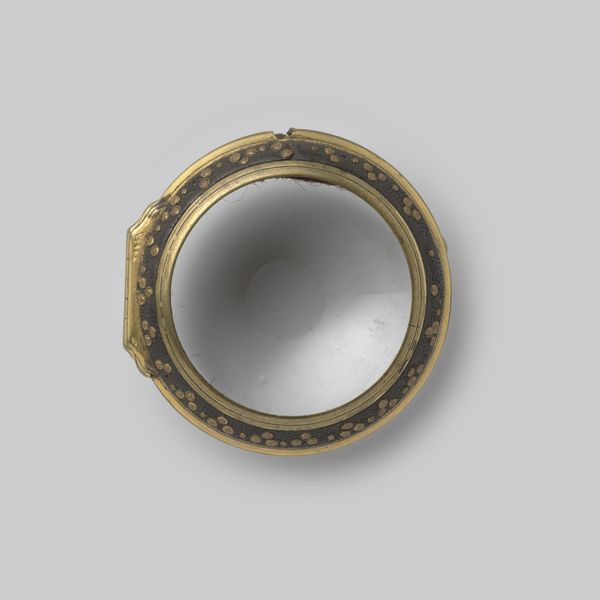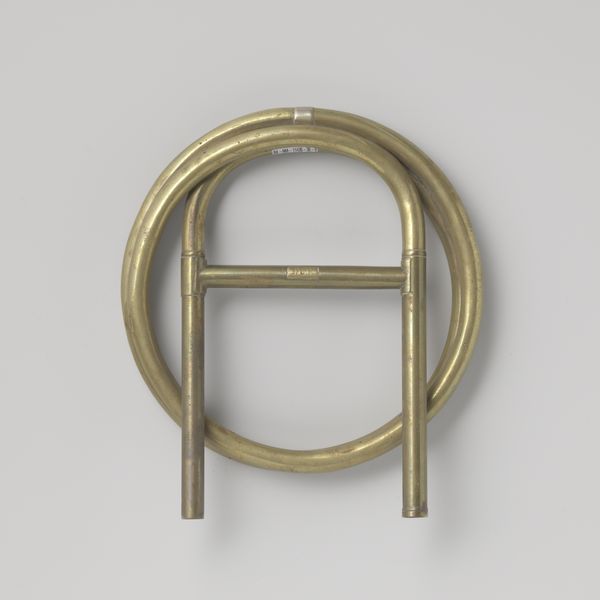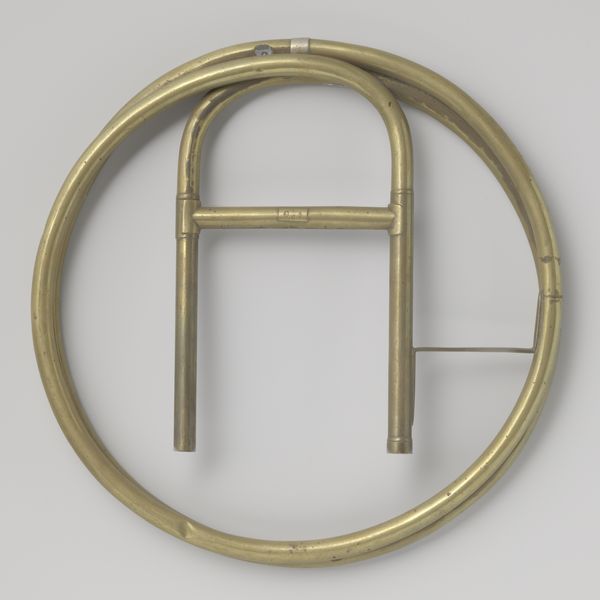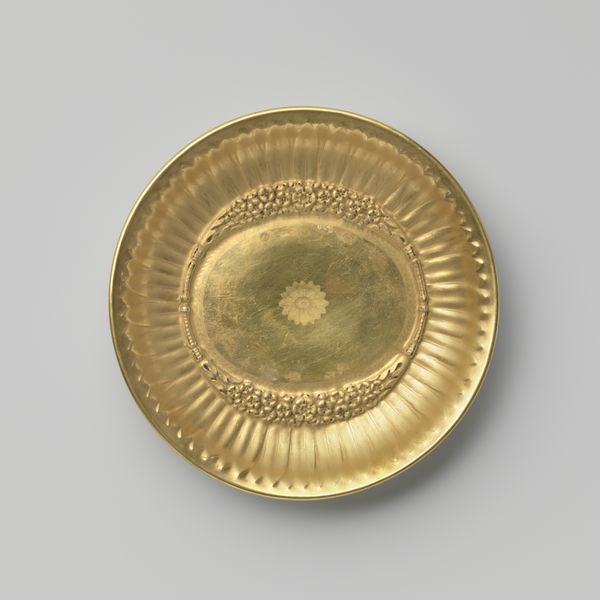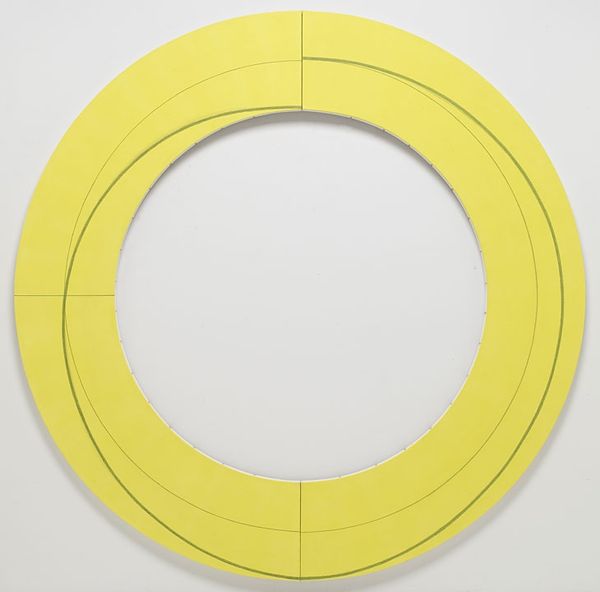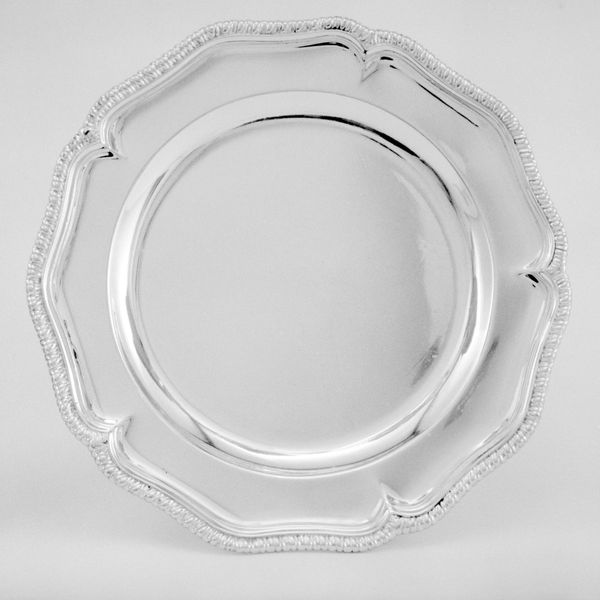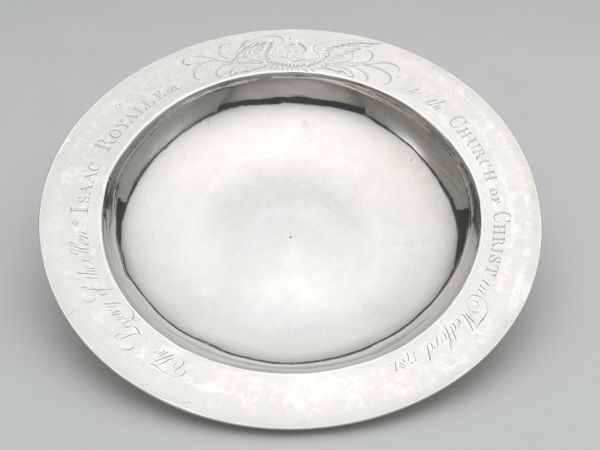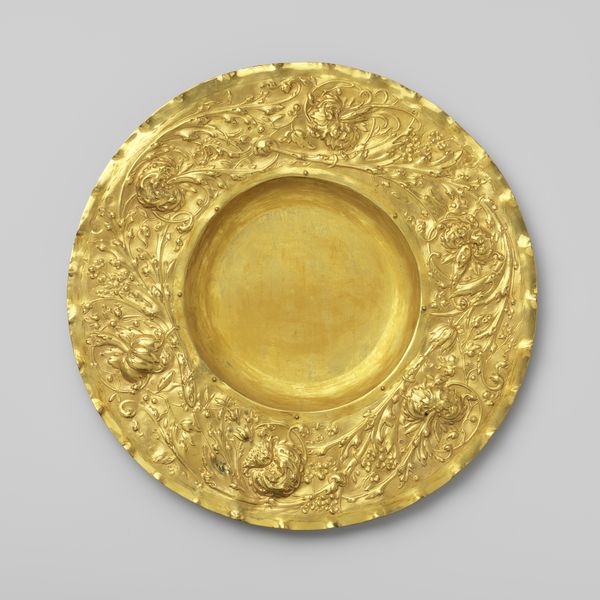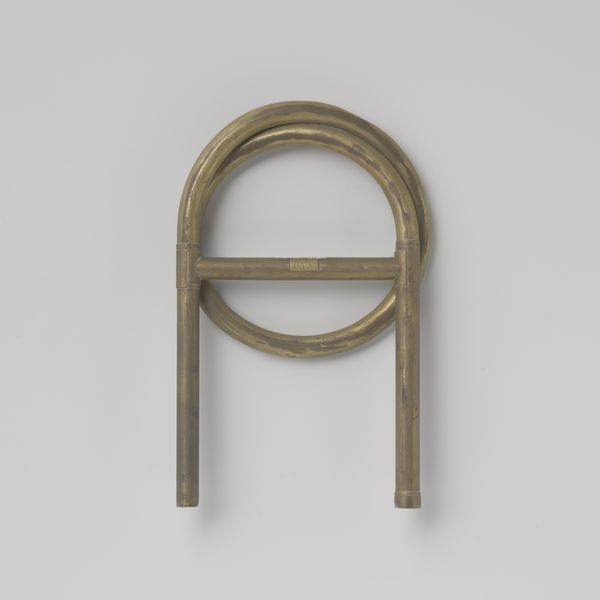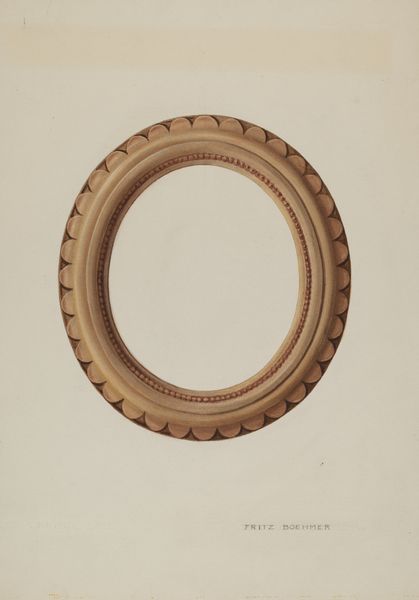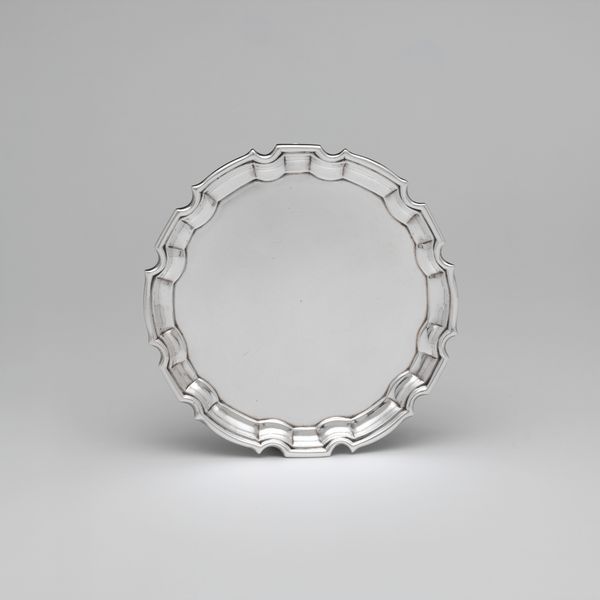
metal, sculpture
#
metal
#
classical-realism
#
geometric
#
sculpture
#
decorative-art
Dimensions: Overall: H. 1 in. (2.5 cm); Diam. 8 in. (20.3 cm) Inner: Diam. 6 3/4 in. (17.1 cm)
Copyright: Public Domain
Editor: Here we have Henry Kellam Hancock's "Furniture Hardware," dating from 1820 to 1830. It's a metal sculpture on display at the Metropolitan Museum of Art. The sheer simplicity of its form is striking. What formal qualities stand out to you? Curator: The purity of the circle immediately commands attention. Hancock masterfully manipulates the properties inherent to metal. Notice how the concentric rings create a dynamic interplay of light and shadow, lending the object a remarkable depth, despite its essentially two-dimensional nature when viewed frontally. Editor: So the form is a crucial part of understanding this sculpture? Curator: Precisely. The formal arrangement asks us to consider how geometric abstraction, in this instance the circle, engages our perception. How do these elemental forms resonate on a purely visual, even visceral, level? Note also the texture; its subtle irregularity catches the light, offering a counterpoint to the severe geometry of its overall shape. What affective possibilities does this bring? Editor: I see what you mean. It stops the perfect circle from feeling cold. Without the variation in the metalwork, it would feel flat. It makes me wonder how a circle can convey so much depth! Curator: And that tension between the perfect geometrical ideal, and the subtle irregularities arising from its materiality and construction, makes "Furniture Hardware" such a compelling piece. Through form, light, and texture, Hancock offers a sustained meditation on abstraction and perception. Editor: I never thought I could find so much complexity in such a simple form! It really makes you focus on the materiality.
Comments
No comments
Be the first to comment and join the conversation on the ultimate creative platform.
